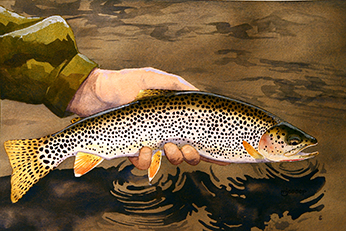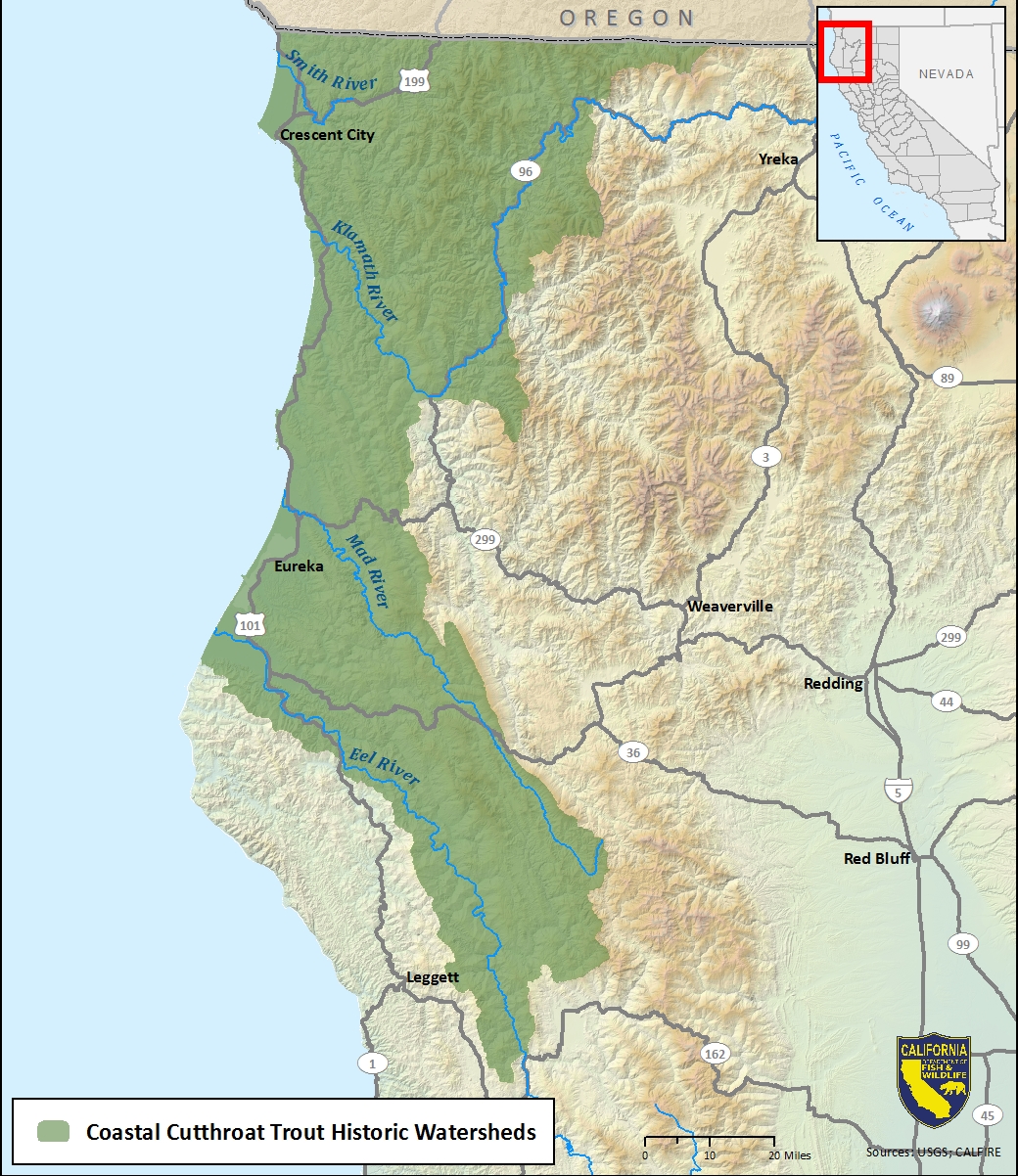Oncorhynchus clarkii clarkii
Distribution and Habitat
 © Mark Jessop, all rights reserved.
© Mark Jessop, all rights reserved.
Coastal cutthroat trout inhabit a large range along the Pacific coast, extending from the Eel River in California north to coastal rainforests in Alaska. They prefer estuaries, lagoons, and small, low-gradient coastal streams. Cool, clean water with ample cover and deep holding pools is a good spot to find them, especially in warmer summer months.
In California, coastal cutthroat trout are at the southern edge of their range. Self-sustaining populations occur in many coastal basins, including Humboldt Bay tributaries. Coastal cutthroat trout also rear in several lagoons and ponds including Big, Stone and Espa lagoons, and the Lake Earl-Talawa complex. The principal large stream systems they occupy are the Smith, Mad, and Lower Klamath rivers. The largest known population in California resides in the Smith River. Historic coastal cutthroat trout distribution may have once extended past the Eel River south to the Russian River (Sonoma County), but they have not been documented in this area for quite some time.
 Map of coastal cutthroat trout historic watersheds. (click/tap to enlarge)
Map of coastal cutthroat trout historic watersheds. (click/tap to enlarge)
Threats
Land use activities, particularly past intensive timber harvest, has led to habitat loss. Coastal cutthroat trout appear to be particularly sensitive to habitat degradation and are often the slowest species to recolonize restored habitats. There is limited information available to evaluate population trends and it is currently unknown whether this species is expanding or declining in California. Records suggest that historically, coastal cutthroat trout were more abundant than they are today.
Conservation and Management
Their overall range is large and California includes a relatively small portion of it. Due to the size, steep gradient, and difficulties in accessing many of the coastal tributaries they inhabit, population surveys are problematic and therefore, generally lacking. Compounding the issue is natural hybridization that occurs with coastal rainbow trout/steelhead, making identification and differentiation difficult, even for well-trained biologists.
The greatest conservation need for coastal cutthroat trout is updated information on their status and distribution so appropriate management measures can be taken. A range-wide, multi-agency effort is compiling all research and monitoring data on this species to assess their status. Recent conservation measures have included habitat restoration and land acquisition of key coastal cutthroat trout habitats.